- the talk discusses how the PC port approaches PSO management to reduce stutter and manage memory when the game was designed for unified memory
- how they approached ray-tracing for parity with the PS5 implementation and what extension got added to improve the quality
- detailed section on how to further debug GPU issues on PC and how to deal with super wide resolution rendering
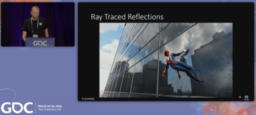
- the video explains visually to read and understand 4x4 transformation matrixes
- explains the basic of matrix/vector operations
- presents how to combine the operations to allow rotations, scaling, and translations of objects using a visual approach
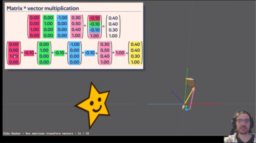
- the blog post describes the approach of incrementally accumulating voxel data to augment the reprojection of the previous depth buffer
- shows images of how the depth buffer develops over time and how small sub-voxels can help to improve the results
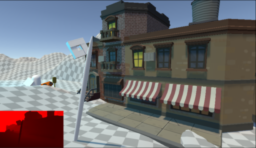
- the article describes how Godot converts SPIR-V shaders to DXIL for D3D12
- covers the old approaches (SPIRV-Cross) and why it was replaced with using Mesa’s NIR approach
- discusses what SPIR-V Specialization constants are and how a patchable DXIL is created to allow the approach with D3D12
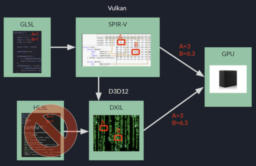
- the video presents an overview of the papers that will be presented during the I3D 2023 in Bellevue
- covering interactive Neural Radiance Fields, importance sampling for Dynamic Diffuse Global Illumination, real-time dune simulation, and many more
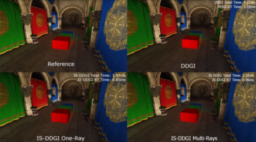
- the video presents the visual difference the overdrive (ReStir-based) raytracing implementation for Cyberpunk 2077 can achieve
- compares against the prior ray tracing implementation and the maximum rasterization quality
- shows cases where the mode makes a huge difference
- additionally presents the performance influence of the mode
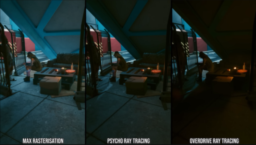
- Nvidia released the Displacement Micro-Map Toolkit SDK
- provided samples and documentation explaining the capability and how to use them from Vulkan
- the technique allows the triangle to be sub-divided and displaced with a highly compressible format
- this can be raytraced to add additional detail at lower costs
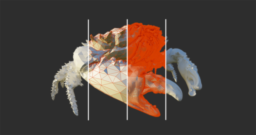
- the tutorial shows how to render a first triangle with WebGPU
- this is using the final WebGPU spec as it is now publically available in Chrome

- the website collects information about the API and extension availability for Web-based usage
- supports WebGL, WebGL2 and WebGPU
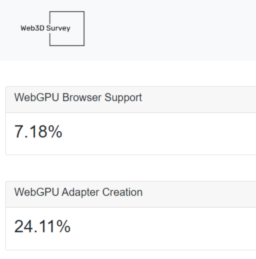
Thanks to Robert Wallis for support of this series.
Would you like to see your name here too? Become a Patreon of this series.